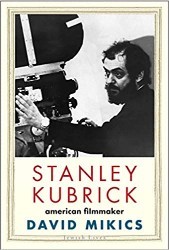When I was a teenager in the Bronx of the late 1950s and early 1960s, I was always struck by the fact that on 169th Street, starting at the southwest corner of the Grand Concourse, stood three synagogues right next to one another: the palatial and Conservative Temple Adath Israel; our shtibl-like Tifereth Beis Jacob, which was an Orthodox, refugee-heavy shul where the lingua franca was Yiddish; and the grander Sephardic Jewish Center. There was even a fourth synagogue across the street.
So there were three synagogues of which we could say, echoing the old joke, “that’s where we wouldn’t go.”
The synagogues were testimony to a time when that part of the Bronx was a densely working-class and bourgeois Jewish neighborhood, and a holiday like Rosh Hashanah would fill the parks with the easy chatter of Jews taking the day off from work. All four of those synagogues are gone, converted into churches and other purposes, as Jews left the southern Bronx for suburban pastures, Manhattan, Florida or Co-Op City, and the neighborhood filled with black and Hispanic newcomers who needed places to worship that satisfied their own religious stirrings.
The story of that transformation is woven in loving detail throughout The Lost Synagogues of the Bronx and Queens and its companion volumes, one published recently for Manhattan and Staten Island, the other published earlier for Brooklyn. All three are available now as a trilogy. The writer and photographer is Ellen Levitt, a lifelong New Yorker with a palpable affection for the forgotten parts of the city who used many of the photographs for an exhibit at the Brooklyn Historical Society.
For Jews who lived in the bygone Bronx, or the altered Jewish neighborhoods of the other boroughs, the book offers a nostalgic and surprisingly informative guidebook filled with sharp and sometimes plaintive architectural, cultural, and historical insights.
I learned, for example, that Eydie Gorme’s family were members of the Sephardic synagogue next to the one where I was bar mitzvahed and that the synagogue, now the Walker Memorial Baptist Church, still displays the Decalogue and Jewish-themed stained glass windows like pentimenti of a former incarnation. Tifereth Beth Jacob, my synagogue, founded in 1926, is now Iglesia de Dios Pentecostal, though the seven-branched menorahs on each side of the building are still visible. And she rightly calls the colonnaded, marble-fronted Temple Adath Israel, now a Seventh Day Adventist Temple, “a magnificent specimen of religious architecture.” Sad as I was to read of how it had changed, it was heartening to know that the main sanctuary has been beautifully maintained.
I responded personally to the book by focusing on the Bronx synagogues, and I’m betting many readers may do the same by focusing on lost shuls from their neighborhoods. But readers can leaf through all three and find themselves absorbed in Levitt’s interviews with Jews who prayed there in the past — as well as gentile congregants who worship there today — and her details are seldom less than beguiling.
What is especially wonderful about these well-researched Baedekers is that they do not forget the bigger picture. Levitt opens the books with introductory chapters that economically trace the history of Jews in the particular borough. “They moved to obtain bigger and better homes, to get away from decaying conditions, or due to the change in atmosphere,’” she writes of the Bronx Jews. She tells the story of Molly Goldberg, the fictional radio and television character created by Gertrude Berg, who lived with her family on East Tremont Avenue, and of the so-called “miracle on Intervale Avenue,” where poor elderly Jews, many without strong family ties, remained in the east Bronx years after the wave of arson and muggings and kept a dilapidated shul going into the 1990s.
For Manhattan, she tells the story of Shaaray Zedek of Harlem and how it morphed from a grand synagogue that could seat 1,000 into one that by 1917 had sixty-five members and two decades later belonged to a black congregation. The building, with its remarkable rose windows, is now called New Bethel Way of the Cross Church of Christ, but the congregation, which now spells its name Shaare Zedek, survives at 93rd Street on the Upper West Side.
She also includes a helpful chapter explaining how synagogues acquired their names and why words like Tifereth (praising), Adath (assembly), and Chevre (friends of) appear in so many. While the writing can be workmanlike at times, the information she has plumbed is often charming. And one is impressed that Ms. Levitt took the time and had the energy to visit over sixty former synagogues just in the Bronx and scores more in the other boroughs.
Not all synagogues became churches. Some are community centers, medical clinics, or schools. At least one became a museum. Sadly, many buildings are gone forever, torched by arson or knocked down by developers, and one feels Levitt’s frustration at not being able to visit them. Their congregants were too scattered to rescue a building that had provided such an anchor for their lives.
Related content:





